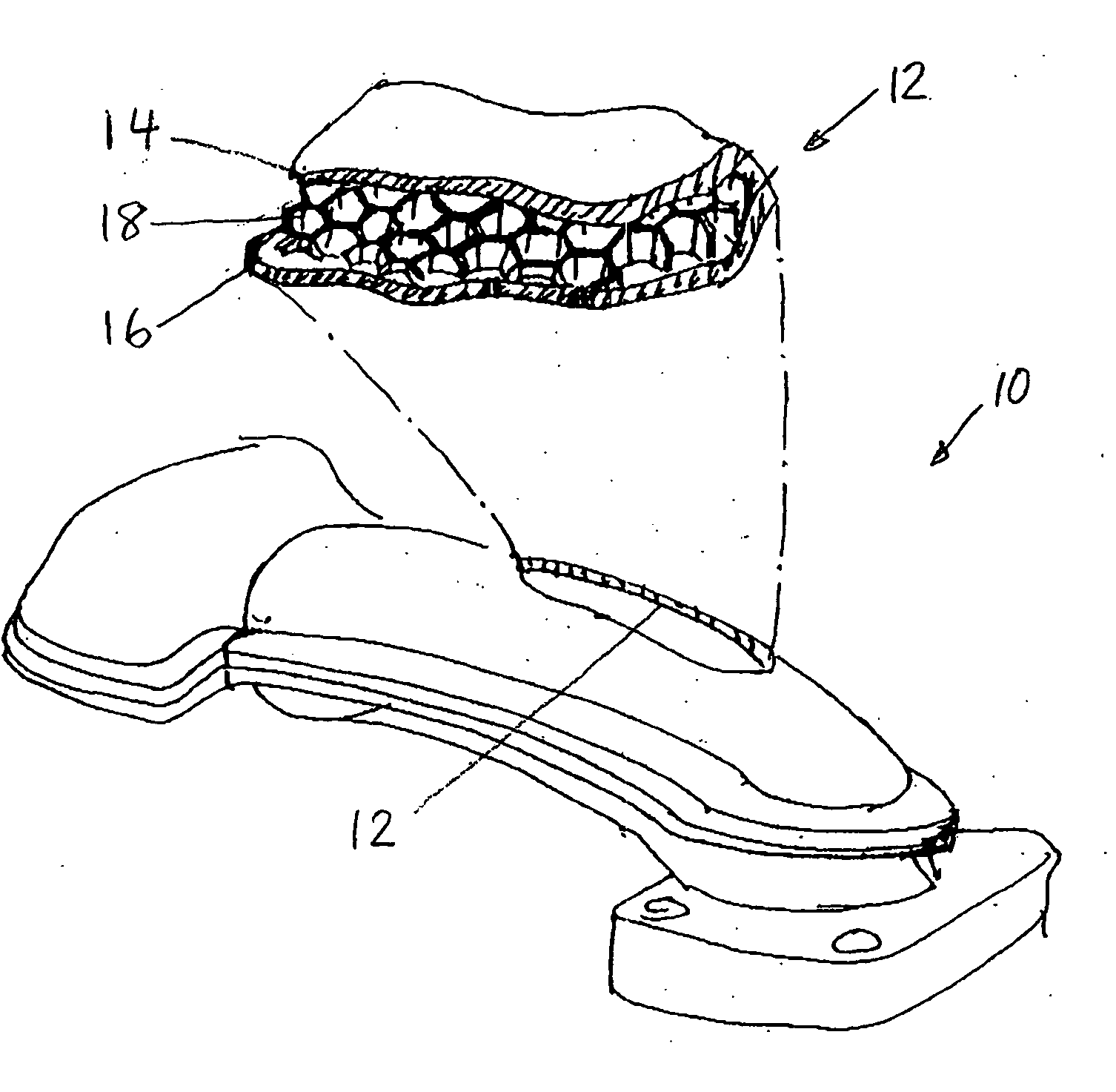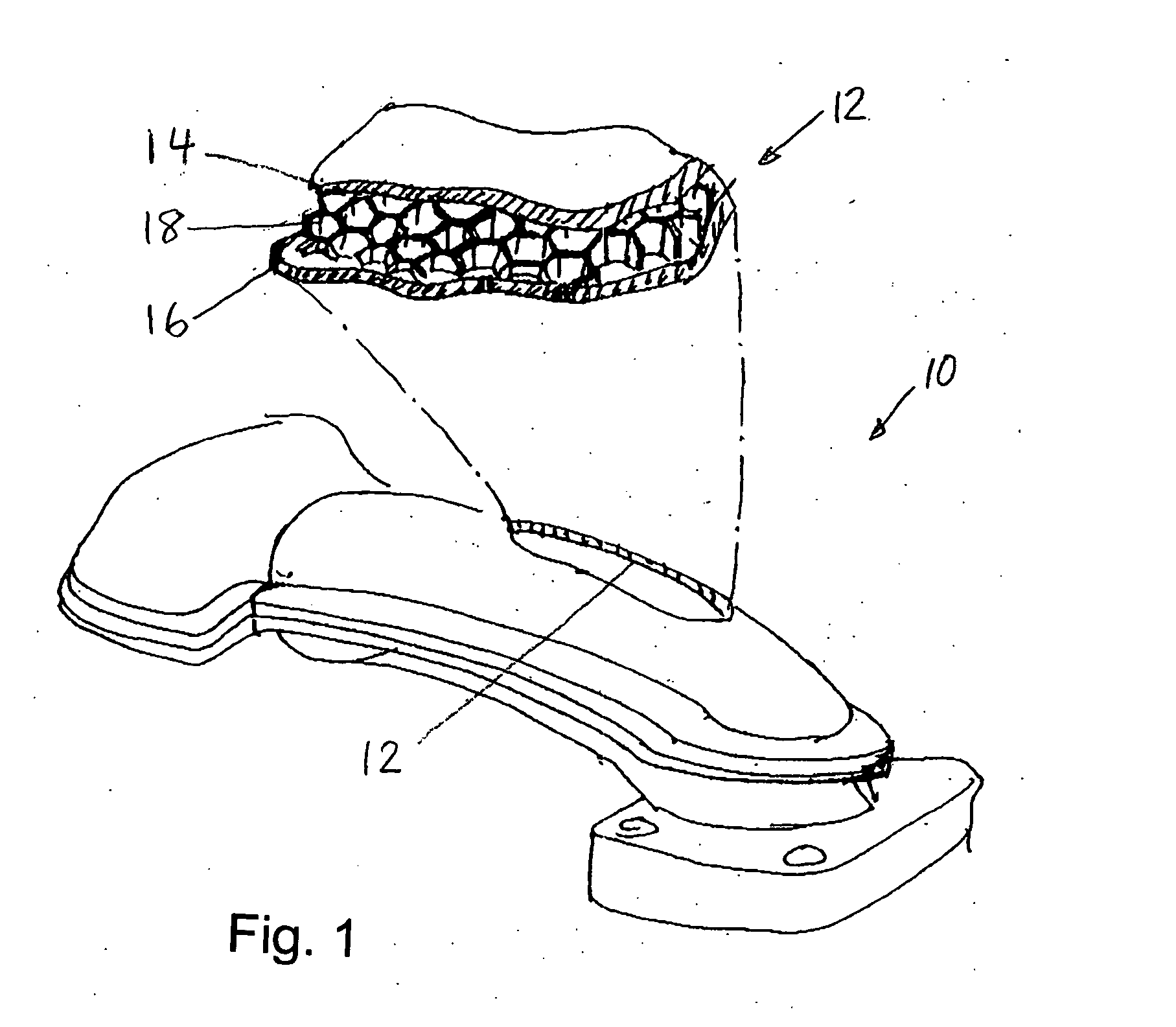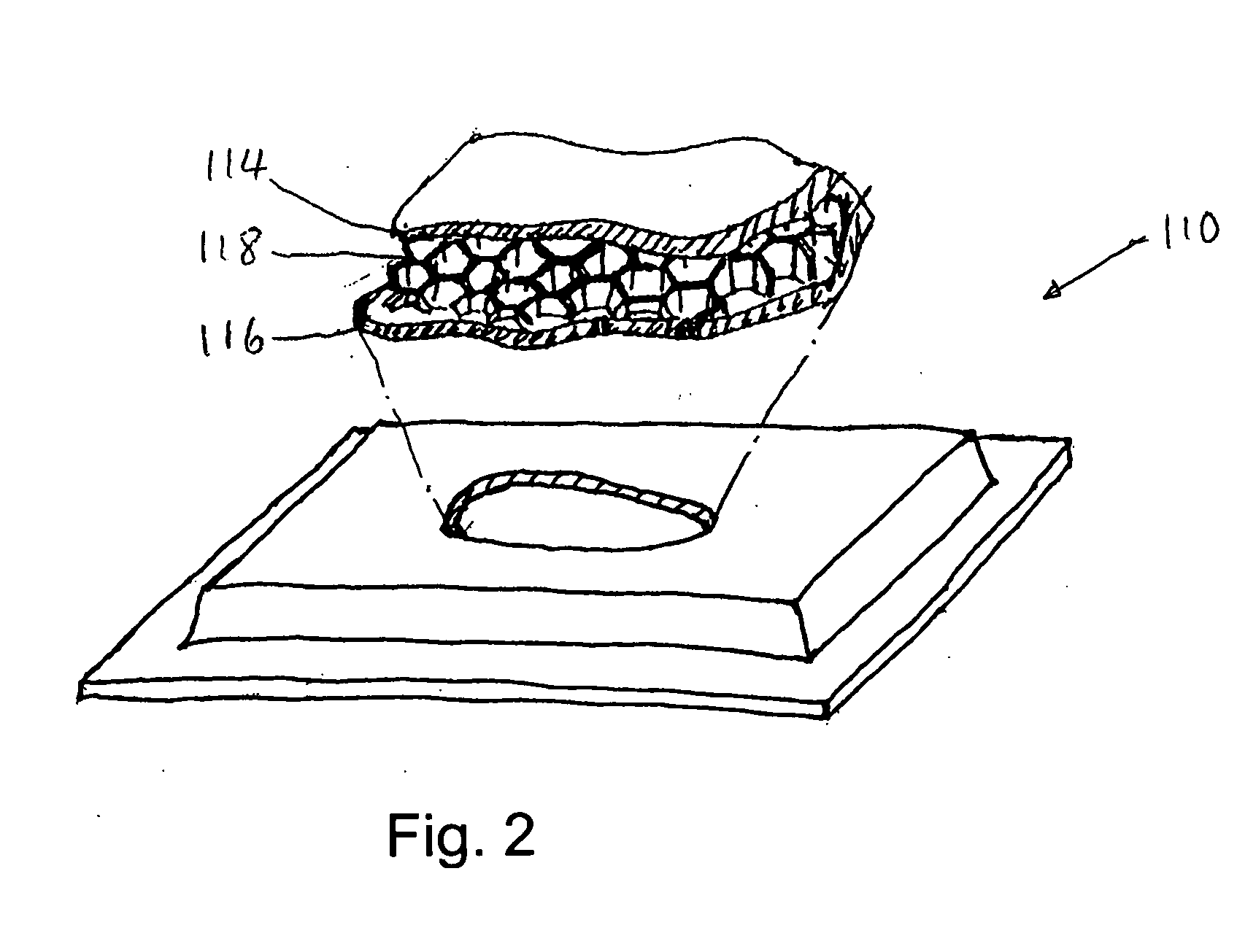Engine component having a honeycomb structure
a technology of internal combustion engine and honeycomb structure, which is applied in the direction of combustion engine, machine/engine, fuel air intake, etc., can solve the problem that the component cannot be excited at its natural frequency to amplify vibration and noise, and achieve the effect of not absorbing much vibration and noise and being easy to excited
- Summary
- Abstract
- Description
- Claims
- Application Information
AI Technical Summary
Benefits of technology
Problems solved by technology
Method used
Image
Examples
Embodiment Construction
[0010]FIG. 1 illustrates a component 10 of a reciprocating internal combustion engine system (not shown in further detail), which in this case is an engine intake manifold. The intake manifold 10 has a wall 12 that includes an outer layer 14, an inner layer 16, and another layer 18 disposed between the outer and inner layers 14, 16.
[0011] Although the wall 12 of the manifold 10 shown in FIG. 1 is an exterior wall, it may be an interior wall. Each of the layers 14, 16, 18 may be made from any suitable material. For example, each layer 14, 16, 18 can be made from a metallic, plastic or composite material. Examples of suitable materials include metals such as aluminum, synthetic resins such as polyamide (nylon), polystyrene and / or acrylic resins, and well known composite materials such as carbon fiber composites.
[0012] The honeycomb layer 18 preferably is attached to the inner and outer layers 14, 16 and may be attached to the inner and outer layers 14, 16 in any suitable manner. For...
PUM
| Property | Measurement | Unit |
|---|---|---|
| adhesive | aaaaa | aaaaa |
| structure | aaaaa | aaaaa |
| cellular structure | aaaaa | aaaaa |
Abstract
Description
Claims
Application Information
 Login to View More
Login to View More - R&D
- Intellectual Property
- Life Sciences
- Materials
- Tech Scout
- Unparalleled Data Quality
- Higher Quality Content
- 60% Fewer Hallucinations
Browse by: Latest US Patents, China's latest patents, Technical Efficacy Thesaurus, Application Domain, Technology Topic, Popular Technical Reports.
© 2025 PatSnap. All rights reserved.Legal|Privacy policy|Modern Slavery Act Transparency Statement|Sitemap|About US| Contact US: help@patsnap.com



